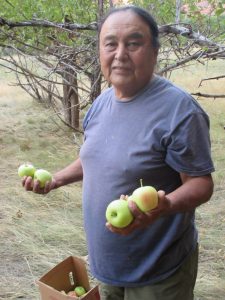I was in mid-flight on October 8, 2009 to fulfill one of my fantasies, “Autumn in New York” and the fall colors of the Hudson River Valley when I read William Least Heat Moon’s “Roads to Quoz.” Quoz is the mysterious, incongruous, odd or peculiar. The unknown. My mother long ago started me on the author’s prolific literary road by giving me a copy of “Blue Highways,” his first travel documentary. His work is kind of like a memoir in present time, much more than travel documentaries, and inspiration for my work with Earth Walks. Here are some quotes from “Quoz”:
- 10…A genuine road book should open unknown realms in its words as it does in its miles. If you leave the journey exactly who you were before you departed, the trip has been much wasted, even if it’s just to the Quickee-Mart.”
- 13…But for me it is the last reason which underlies all the others, for to go out not quite knowing why is the very reason for going out (on the road) at all.
- 14…this fragment from a Navajo chant: “Remember what you have seen, because everything forgotten returns to the circling winds.”
On another dream come true, in 2010 I saw the South full springtime bloom when I visited a cousin north of Atlanta. Boiled peanuts, bluegrass music, church services. And a “quoz” indeed: the Georgia Guidestones, a mysterious Stonehenge -like monument near Elberton, GA. Eight world languages were carved in the stones urging humans to preserve and protect the earth and life in harmony with the creator. Unfortunately, in 2022, a bomb was detonated at the site, destroying one of the stones and ultimately resulting in its dismantling. The mayor and town were shocked and saddened at the senseless act. https://www.npr.org/2022/07/28/1113855150/a-georgia-monument-was-destroyed-locals-blame-conspiracy-theories See also: https://en.wikipedia.org/wiki/Georgia_Guidestones and https://www.atlasobscura.com/places/georgia-guidestones









